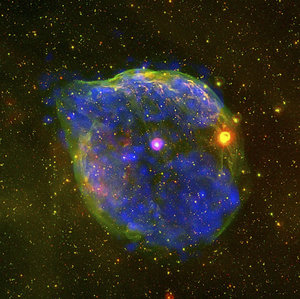Accept all cookies Accept only essential cookies See our Cookie Notice

About ESA
The European Space Agency (ESA) is Europe’s gateway to space. Its mission is to shape the development of Europe’s space capability and ensure that investment in space continues to deliver benefits to the citizens of Europe and the world.
Highlights
ESA - United space in Europe
This is ESA ESA facts Member States & Cooperating States Funding Director General Top management For Member State Delegations European vision European Space Policy ESA & EU Space Councils Responsibility & Sustainability Annual Report Calendar of meetings Corporate newsEstablishments & sites
ESA Headquarters ESA ESTEC ESA ESOC ESA ESRIN ESA EAC ESA ESAC Europe's Spaceport ESA ESEC ESA ECSAT Brussels Office Washington OfficeWorking with ESA
Business with ESA ESA Commercialisation Gateway Law at ESA Careers Cyber resilience at ESA IT at ESA Newsroom Partnerships Merchandising Licence Education Open Space Innovation Platform Integrity and Reporting Administrative Tribunal Health and SafetyMore about ESA
History ESA Historical Archives Exhibitions Publications Art & Culture ESA Merchandise Kids Diversity ESA Brand CentreLatest
Space in Member States
Find out more about space activities in our 23 Member States, and understand how ESA works together with their national agencies, institutions and organisations.
Science & Exploration
Exploring our Solar System and unlocking the secrets of the Universe
Go to topicAstronauts
Missions
Juice Euclid Webb Solar Orbiter BepiColombo Gaia ExoMars Cheops Exoplanet missions More missionsActivities
International Space Station Orion service module Gateway Concordia Caves & Pangaea BenefitsLatest
Space Safety
Protecting life and infrastructure on Earth and in orbit
Go to topicAsteroids
Asteroids and Planetary Defence Asteroid danger explained Flyeye telescope: asteroid detection Hera mission: asteroid deflection Near-Earth Object Coordination CentreSpace junk
About space debris Space debris by the numbers Space Environment Report In space refuelling, refurbishing and removingSafety from space
Clean Space ecodesign Zero Debris Technologies Space for Earth Supporting Sustainable DevelopmentLatest
Applications
Using space to benefit citizens and meet future challenges on Earth
Go to topicObserving the Earth
Observing the Earth Future EO Copernicus Meteorology Space for our climate Satellite missionsCommercialisation
ESA Commercialisation Gateway Open Space Innovation Platform Business Incubation ESA Space SolutionsLatest
Enabling & Support
Making space accessible and developing the technologies for the future
Go to topicBuilding missions
Space Engineering and Technology Test centre Laboratories Concurrent Design Facility Preparing for the future Shaping the Future Discovery and Preparation Advanced Concepts TeamSpace transportation
Space Transportation Ariane Vega Space Rider Future space transportation Boost! Europe's Spaceport Launches from Europe's Spaceport from 2012Latest

Intense X-rays sculpt Thor’s neon-hued helmet
Thank you for liking
You have already liked this page, you can only like it once!
This brightly coloured scene shows a giant cloud of glowing gas and dust known as NGC 2359. This is also dubbed the Thor’s Helmet nebula, due to the arching arms of gas stemming from the central bulge and curving towards the top left and right of the frame, creating a shape reminiscent of the Norse god’s winged helmet.
The neon colours in this image are not just beautiful, they also tell us about the nebula’s composition. The bright blue patches show X-ray emission, spotted by the EPIC cameras on ESA’s XMM-Newton space observatory, while the pale red and green regions trace the glow from ionised hydrogen and oxygen, as seen by the Stars and Shadows Remote Observatory South at the Cerro Tololo Inter-American Observatory.
The intense X-ray emission detected by XMM-Newton is emanating from a star at the centre of the nebula. This star, a Wolf-Rayet star named HD 56925, is old, massive and pushing out incredible amounts of material at a staggering pace: the star loses a mass equivalent to that of the Sun in less than 100 000 years, in the form of a wind moving faster than 1500 km/s.
Having such violent inhabitants has influenced NGC 2359’s messy shape. The nebula consists of a central bubble surrounded by a tangled web of gaseous filaments, thick channels of dark dust and bright outbursts, where material swept up by the stellar wind has collided with the surrounding gas and triggered rippling shock waves throughout the region.
The blue patches in this image highlight the nebula’s hottest regions: the central bubble and a blowout to its lower left. NGC 2359’s gas is thought to reach temperatures ranging from several million up to tens of millions of degrees.
This image combines X-ray data collected in 2013 by XMM-Newton (blue) with optical observations from Cerro Tololo in Chile (green and red). North is to the left, west is up. It was first published in the XMM-Newton image gallery.
-
CREDIT
J.A. Toala & M.A. Guerrero (IAA-CSIC), Y.-H. Chu (UIUC/ASIAA), R.A. Gruendl (UIUC), S. Mazlin, J. Harvey, D. Verschatse & R. Gilbert (SSRO-South) and ESA -
LICENCE
ESA Standard Licence

Cosmic neon lights

Hot interior of the Eskimo Nebula

The Orion nebula

Wolf-Rayet bubble















 Germany
Germany
 Austria
Austria
 Belgium
Belgium
 Denmark
Denmark
 Spain
Spain
 Estonia
Estonia
 Finland
Finland
 France
France
 Greece
Greece
 Hungary
Hungary
 Ireland
Ireland
 Italy
Italy
 Luxembourg
Luxembourg
 Norway
Norway
 The Netherlands
The Netherlands
 Poland
Poland
 Portugal
Portugal
 Czechia
Czechia
 Romania
Romania
 United Kingdom
United Kingdom
 Slovenia
Slovenia
 Sweden
Sweden
 Switzerland
Switzerland

























